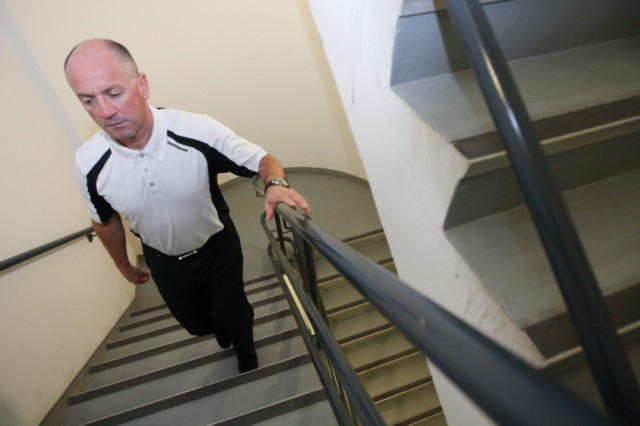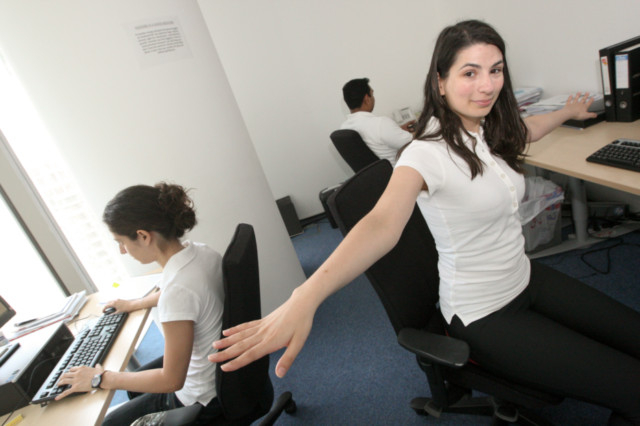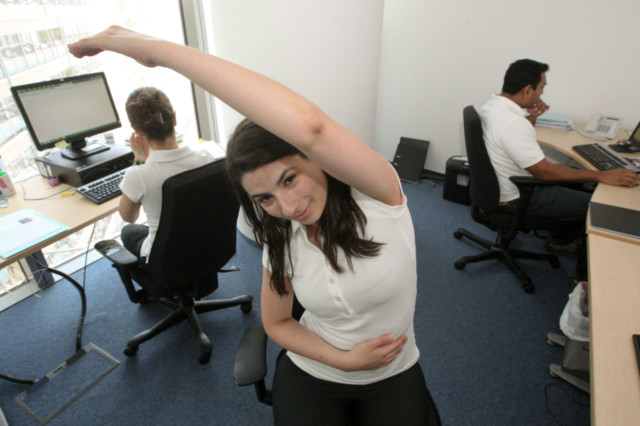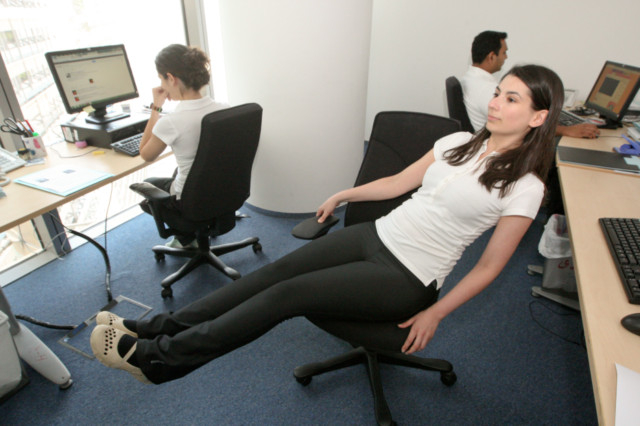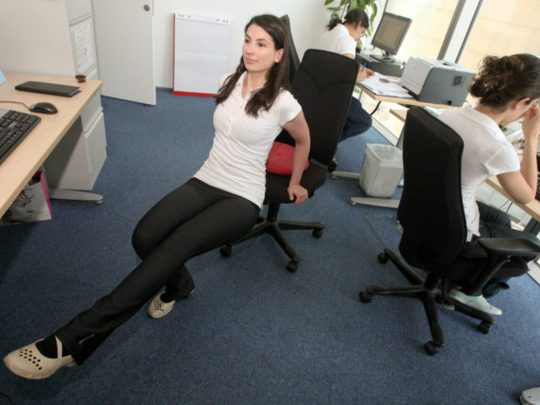
Dubai: Long working hours need no longer be an excuse for not exercising. On the contrary, experts at a Dubai-based rehabilitation centre say they are precisely why you should work out. And no, you don’t have to leave the office to loosen those muscles.
The Kuur Physiotherapy Center in Bur Dubai, which specialises in physical rehabilitation for a host of conditions, has rolled out Workout@work, a fitness programme aimed at promoting physical and mental wellbeing in the workplace.
Marilyne Lopez, chartered physiotherapist, said: “The UAE has a large working population that spends considerable time at the office. But few realise that overworking and poor posture can lead to several health problems. They are a major cause of musculoskeletal disorders and stress.”
In addition, the sedentary lifestyle that a desk job brings with it leads to several lifestyle diseases like obesity, diabetes and heart problems, she added.
Dr Dejan Jovanovic, sports medicine specialist, said: “Short walks and some basic stretches go a long way to ensuring good health. Presuming most offices have a corridor or a flight of stairs, short walks can easily be undertaken. They can engage 80 per cent of the muscles in your body.”
He recommends at least two walking sessions of up to 10 minutes each in a day. “With this, you can manage the minimum weekly requirement of 150 minutes prescribed for the general sedentary population.”
A stretch in time
Similarly, stretching exercises from head to toe should be done twice a day for about five-10 minutes. “When we sit at the desk for more than two hours, our muscles tend to get tired and we experience spasms. We can relieve the pain and tension through stretching. Strengthening the muscles is also important, but it usually cannot be done in the office.”
Lopez said desk exercises for office workers are basic but very effective. Using a red rubber pillow on her office seat, she said the stretches begin by adopting a good posture. “This pillow helps.”
Demonstrating a series of exercises, she said the initial warm-up entails working the ankles and wrists with a few rolls. “We also have what we call the ‘Cleopatra’ and ‘mermaid’ stretches which warm up the arms, shoulder and spine.”
The first set of desk exercises or “Scissors” challenges the pelvic area in “an open kinetic chain setting” which progresses into a functional position.
The single and double leg stretches follow to work the full legs and abdomen. Arm openings and double arm stretches mobilise the shoulders and thoracic spine, besides retraining the dissociation between the upper limb and spine, she added. A few squatting exercises help work out the thighs and legs.
Once the desk exercises are done, a few more stretches are recommended. They include the chest and glute stretch sitting on a Swiss ball and the spine twist. A front plié and thigh stretch done standing also helps.
Lopez said it is important for employers to give their staff short breaks and encourage them to exercise. “This can help reduce absenteeism and improve productivity and morale in the workplace.”
Kuur conducts educative workshops and seminars at companies willing to adopt the regime. It raises awareness on the Workout@work programme and addresses issues like back pain, diabetes management and prevention and health tips for office-going mums-to-be.
Activities include posture assessments, overall fitness assessments and random blood sugar, blood pressure and BMI tests as well as personal nutritional counselling. Fitness demonstrations include correct sitting techniques, simple desk stretches. A Bhangra fitness workout by the Dubai Bhangra Jammers is also included in some modules.



